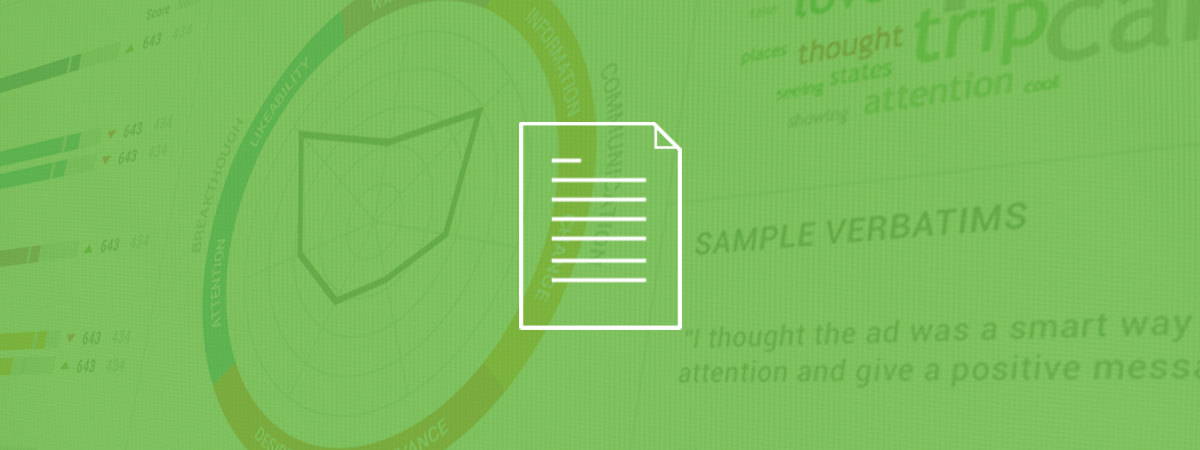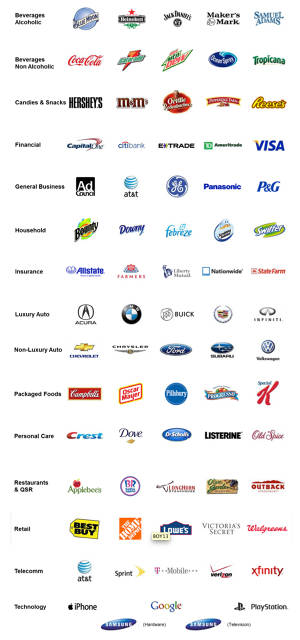
Fast Company
Coke and P&G figure into the top brands, while some usual suspects are absent, according to a watch list from Ace Metrix which measures the performance of ads.
In the ad world there are deeply entrenched assumptions about what makes a great commercial. Problem is those notions are sometimes at odds with public opinion. The award-winningest ads are not necessarily the most effective. And some of the most persuasive ones wouldn’t pass muster with an exacting awards jury. So when an organization declares a particular marketer as “brand of the year,” it’s reasonable to consider it a subjective accolade. Unless, of course, your organization has data that is said to accurately reflect how effective an ad is in the minds of consumers.
Mountainview, Ca.-based measurement firm Ace Metrix says it has such data and is using it to proclaim one advertiser 2012’s Brand of the Year. Founded in 2007, Ace Metrix is a technology company that scores every ad that breaks in the U.S. within 24 hours. Using a pool of 500 consumers to rate each ad based criteria such as likeability, relevance, information, and desire, Ace Metrix then produces an ad’s Ace Score, which ranges from 0-950. The data is then used by the company’s clients to assess how well their advertising performs and how they might improve.
“To us, there was such a lack of clear analytics in advertising and that’s why we decided to do Brand of the Year,” says CEO Peter Daboll. “It’s hard enough to do one good commercial, let alone be able to have consistently high quality throughout the year. Then you’ll see lists of the best ads of the year. Well, according to who? They just sit around a table and say we like that one. This is objective, consistent, and complete and no other data source has this comprehensive view, so we thought it was most fair.”
But before it crowns one brand the year’s most successful advertiser (in January), Ace Metrix has released its Watch List, a list of the top five brands from 23 industries and 85 categories that ran five or more ads, as of Nov. 1.

So how have this year’s brands measured up? To ad watchers there are some surprising inclusions and omissions that reveal consumers might not connect with work from what are conventionally thought of as creative advertisers.
For instance, in alcoholic beverages, big brands such as Miller, Coors, and Budweiser are all missing while craft brew labels such as Blue Moon and Samuel Adams and more specialized drinks like Johnny Walker and Maker’s Mark make the list of top-rated brands. Daboll says the omission of the big brews from this list is not representative of a declined ad spend, but rather a representation of the quality of work. “We can look at ad volumes for brands like Coors and Miller and they’re almost unchanged year over year. It’s just that the aggregate score of their body of work didn’t reach what it did in previous years.”
The story is the same in non-alcoholic drinks. Coke fared well as usual, further bolstered by its Olympics sponsorship. But Pepsi is absent, as is Dr. Pepper, usual suspects for top soft drink advertisers. If you’re thinking the lack of fizzy drinks on the list is a result of a trend towards healthier choices, think again. “We generally find that consumer shifts take quite a while,” Daboll says. “We’re looking at how the ads resonated with consumers. With Coca-Cola’s polar bear ads, even if you’re not a Coca-Cola drinker you still might find that ad to be likable and high attention. So I don’t think this list represents a trend; I think it’s really a result of the efficacy of the campaigns that they ran.”
Daboll makes note of P&G’s inclusion in the General Business category. While a leading advertiser and, like Coke, definitely bolstered by the Olympics, he says P&G’s amazing “Best Job” ad shows just how specific an insight Ace Metrix’s data can provide.
“The emotion score on that ad was extremely high–it was in the top 1% of all ads we’ve ever had. But on a brand impact, they were actually quite low. They only put P&G and the end and you can’t go to the store and buy a P&G thing, so the brand delivery on that was relatively weak,” he says, noting that while the low brand delivery resulted in a lower Ace Score, it actually did exactly what the client wanted.
In technology, Google made the list with its popular and frequent ads, while Samsung’s appearance is on the back of its tablet ads, besting Apple’s iPadads. Though the Cupertino giant still made the list for its iPhone work.
While each category has its leading advertisers, all categories are not created equal, which is why Ace Metrix chose to release the Watch List. Come January, only the winning brand will be fêted and Daboll says “it’s good for companies to have some recognition more that just the winner.”
“The reason we break these up by categories is that we look for normative data in all the categories,” says Daboll, noting that because Ace Metrix uses a standardized rating system for all ads, it’s able to compare both competitively and cross-industry. “Financial services is typically the lowest norm from all the categories. People aren’t that interested. But we didn’t see the MasterCard ads or American Express in there. They’re typically in that list. On car insurance, Progressive and Geico are notably absent, while Liberty Mutual and All State have really focused time and attention on the quality of their work.”
Daboll says he hopes the Watch List becomes a valuable resource for clients and their agencies. “These are really close relationship and sometimes they work and sometimes they don’t, especially for the ones that take a bit of risk and don’t know if it’s going to work. It’s very important to show that the brand is a leading communicator with their audience.”
To read the original article, visit Fast Company.